Vordere Karlstr. 12
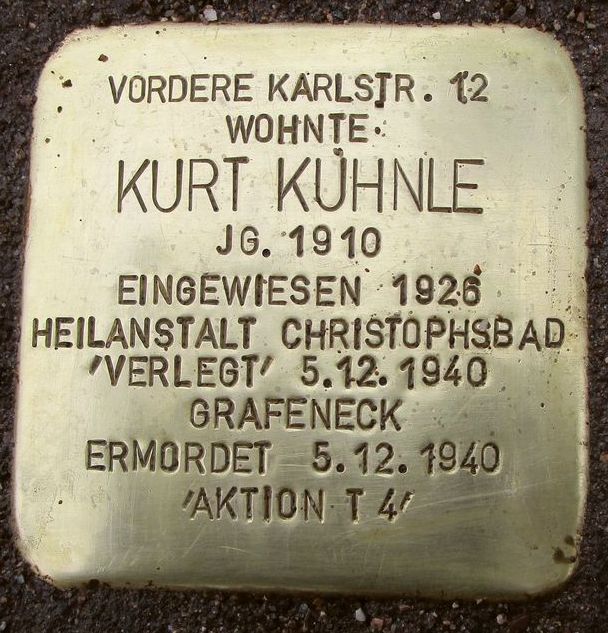
As a student he got hurt, was permanently handicapped , therefore he was gased. A Stolperstein (stumbling stone) reminds us of Kurt Kuhnle.
„That he is not forgotten!“ Gerd Kuhnle is moved when he puts roses to the Stolperstein for his uncle Kurt. Nothing reminds us of the little house in which he lived with his parents and sisters and brothers at the end of Vordere Karlsstraße in Goeppingen. Today there is a mighty office building. Only a few years ago Gerd Kuhnle learned about the fate of his uncle. „My father always told us that his three brothers had been killed in the war. Only shortly before his 90th birthday he told us what really had happened“ and asked his son to do research in the matter. It became quickly clear to Gerd Kuhnle that his uncle Kurt had a fate that differed from the fates of his younger brothers Erwin and Ernst who were killed in the war as soldiers.
Gerd Kuhnle contacted the Goeppingen Stolperstein initiative. Because Kurt Kuhnle had become a victim of the inhumane „Aktion T4“, „T4“ stood for Tiergartenstraße vier (four) in Berlin, the place where the systematic murder of thousands of people was organized. People whose lives in the Nazi version were „not valuable“, which means they were psychically ill or handicapped and therefore depending on the support of the so-called „healthy body of the nation“. In Goeppingen there were also 293 people concerned as patients of Klinikum Christophsbad. The ones who could privately pay the bill had a chance of survival. The „Staatszöglinge (people dependent on state subsidies)“ for whom the State of Wuerttemberg paid did not have a chance. They were moved from the private hospitals to public hospitals and from there deported. For example to the Mordanstalt (place of murder) Grafeneck near Muensingen. „I hope he did not have to suffer too long“, Gerd Kuhnle says. Because he knows that the first victims were poisoned by automobile gases.
Kurt Kuhnle who was born in 1910 in Schleiz, Thuringia, first led an inconspicuous life. His parents, Ernst and Helene, née Voelkel, moved at about 1911 together with his older sister Hedwig from Schleiz to Goeppingen. Ernst Kuhnle had difficulties as a plumber, mechanic and metalworker to earn enough money for his altogether seven children. Although he seems to have been a talented workman for he constructed a model locomotive for the Maerklin company. The small house that belonged to the town of Goeppingen at the end of Vordere Karlsstraße supplied little comfort for the family.
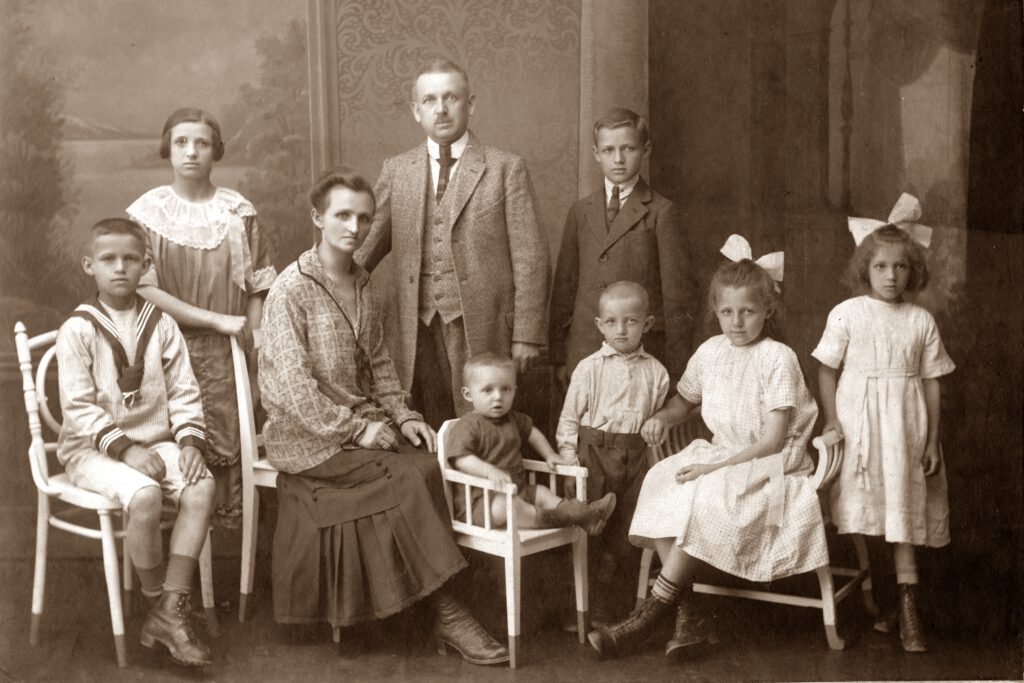
On the family photo dating approximately in 1924 Kurt is in a prominent position, he alone stands in one row with his parents and in contrast to his younger brother Erwin he wears an „adult“ suit. He possibly was the „hopeful“ of his family, he seems to have been intelligent and he gained a Freistelle (scholarship) for Gymnasium (grammar school or college).
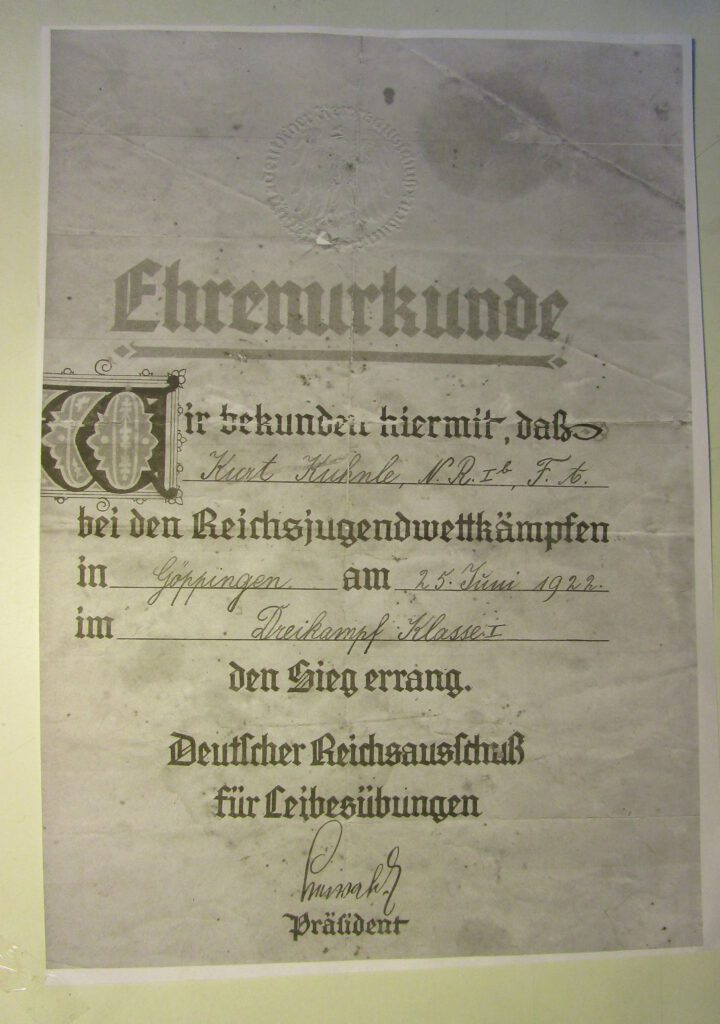
A diploma of honor of 1922 documents that the then 12-year-old boy had won the victory in triathlon class I in Reichsjugendkämpfen (Imperial/Reichs youth competition) in Goeppingen. But sport should dominate his future life badly: In a sports accident with the „Rhönrad (Rhön wheel, a sports apparatus)“ he suffered a serious head injury that lead to epileptic fits. The timing of the accident cannot be traced in the family memory but it seems probable that thus his time in Gymnasium ended. Kurt’s psyche had been damaged, according to the family memory he acted sometimes „maliciously“.
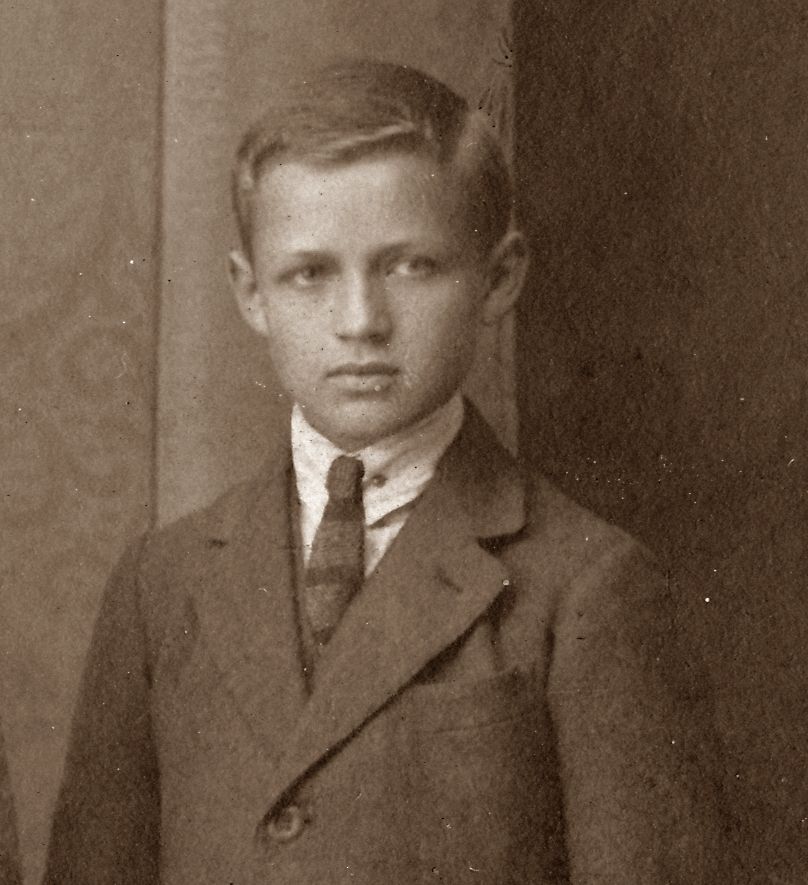
From May 6, 1925 till October 20, 1926 Kurt Kuhnle worked in the nearby situated company Gutmann as a weaver. Gerd Kuhnle is able to add from the family memory: „ The noise of the looms have made him definitely sick“. Kurt could no longer live at home and was institutionalized on November 24, 1926, shortly after bis 16th birthday, in the Goeppingen private mental home Christophsbad where he lived till June 1940. From there he was brought to the Staatliche Heil- und Pflegeanstalt Weissenau near Ravensburg (State institution to heal and care), then on December 5, 1940 deported to Grafeneck and possibly on Nicholas Day 1940 killed by gas.
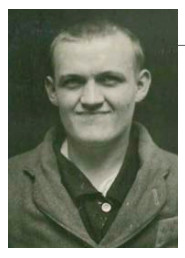
Why Gerd Kuhnle’s father Willy, deceased in the meantime, Kurt’s younger brother, has remained silent for such a long time, Gerd Kuhnle cannot say. „Maybe he was ashamed of his brother. But really others have to be ashamed.“ Together with his father Gerd Kuhnle had visited the memorial in Grafeneck and now is happy that he could create a memorial for his uncle. He admonishes to be cautious. „Resist against the beginnings“, he demands in the face of Nazist attacks on society.
The Stolperstein for Kurt Kuhnle was set exactly 80 years after his murder. One can find it on the pavement/sidewalk leading to the railroad bridge, slightly above the site where Kurt’s home Vordere Karlsstrasse 12 had stood.
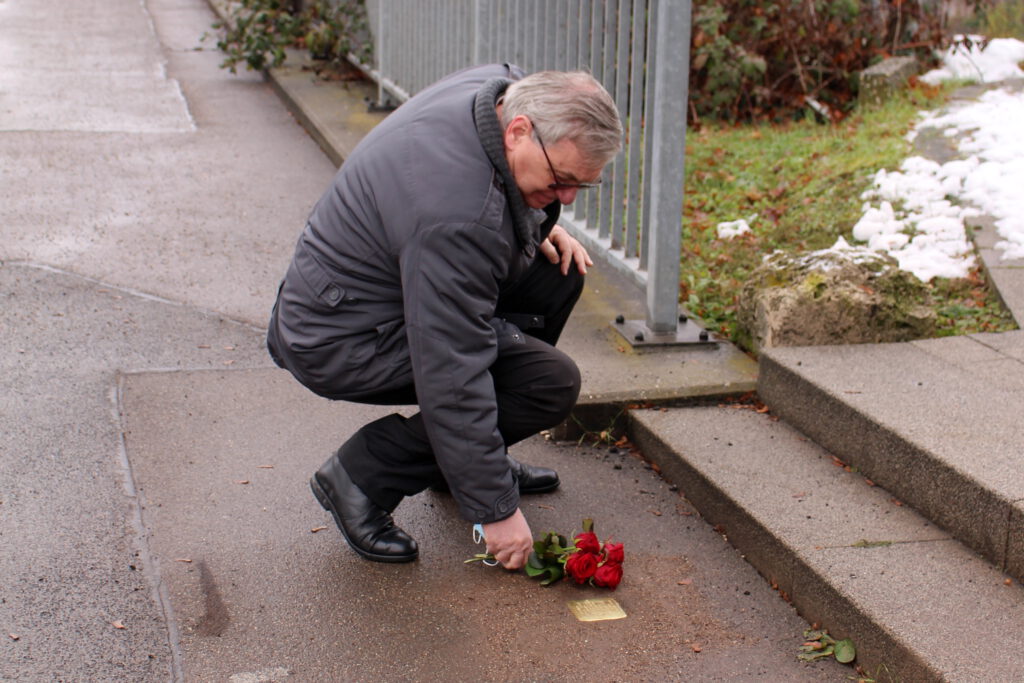
In the publication „The Aktion T 4 and the healing institution Christophsbad in Goeppingen“ the town archives have documented „The annihilation of not valuable life in 1940/41 (subtitle)“. The publication can be purchased in the town archives and in bookstores (ISBN 978-3-933844-65-1). Further information also in: Daniel Hildwein / Thomas Stöckle: Das Christophsbad Göppingen. Eugenics and Nazi “Euthanasia” 1933 to 1945. Göppingen 2023.
(08.12.2020 mh/kmr/pr)













Meinem Onkel ist ein ähnliches Schicksal widerfahren. Er war Jahrgang 1911, ist in Göppingen geboren und aufgewachsen. Bei Fa. Böhringer hat er eine Lehre als Maschinenschlosser absolviert. Von meinem Vater weiß ich lediglich, dass sein 9 Jahre älterer Bruder nach einem Unfall an Epilepsie erkrankt ist. Wie meine zwischenzeitlichen Nachforschungen ergeben haben, wurde mein Onkel 1932 in die Heilanstalt Weißenau stationär eingewiesen. Am 27.05.1940 wurde er ebenfalls nach Grafeneck “verlegt”, wo er am selben Tag noch vergast wurde. Mein Vater war wie seine drei Brüder bereits Soldat und hat irgendwo im Feld von seiner bereits verwitweten Mutter die Nachricht erhalten, dass sein Bruder laut einer schriftlichen Benachrichtigung an einer Lungenentzündung verstorben sei. Er hat mir gegenüber stets den Verdacht geäußert, dass sein Bruder ein Opfer der Euthanasie war. Mein Vater ist bereits 1978 verstorben und irgendwie ist damit auch das Schicksals meines Onkels in Vergessenheit geraten. Erst seit ein paar Monaten versuche ich, mehr über meinen Onkel zu erfahren und konnte schon einige Erkenntnisse gewinnen. Derzeit läuft mein Antrag auf Bereitstellung von Kopien der Weißenauer Patientenakte meines Onkels , die beim Bundesarchiv in Berlin offensichtl. vorliegt. Ich werde mich mit der Initiative Stolpersteine Göppingen demnächst in Verbindung setzen.